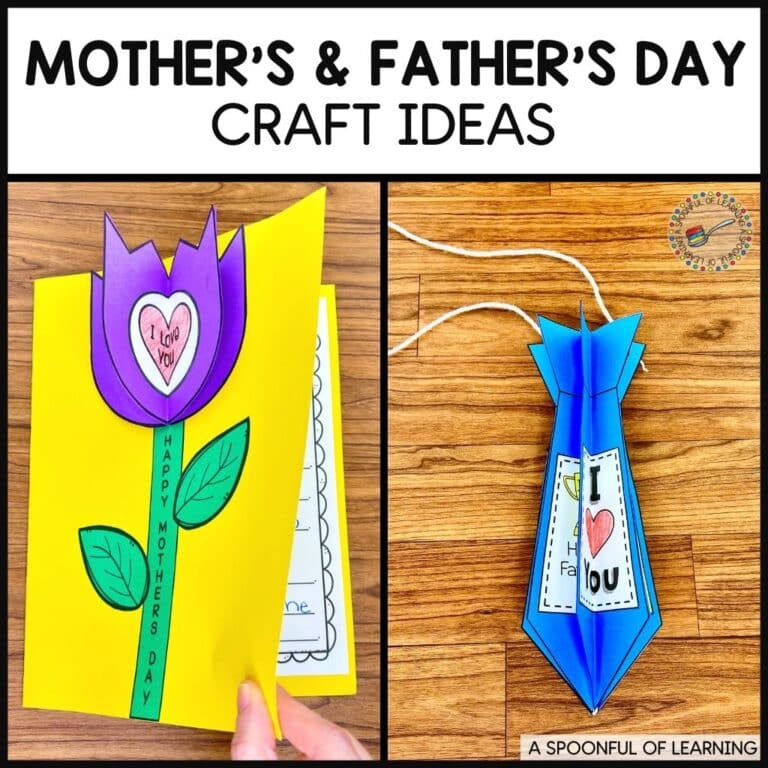
Shop Best-Selling Teaching Resources
Menu
If you’re looking for fun ways to teach shapes to kindergarten students, keep reading! In this post, I’m sharing my favorite resources and tips for teaching shapes in kindergarten. You can use these ideas to help your students master shape names and attributes for both 2D and 3D shapes!

Between letters, numbers, fine motor skills, and classroom routines, young kindergarten students are learning a lot every single day! It takes a lot of engaging activities and strategies to get all of these concepts to stick for our students. Shapes are no exception! Here are some of my favorite tips and strategies to teach shapes in kindergarten.
The first step in learning about shapes is to see the visual differences between shapes. Since students’ visual discrimination skills are still developing, this is an important step to take in teaching shapes in kindergarten!
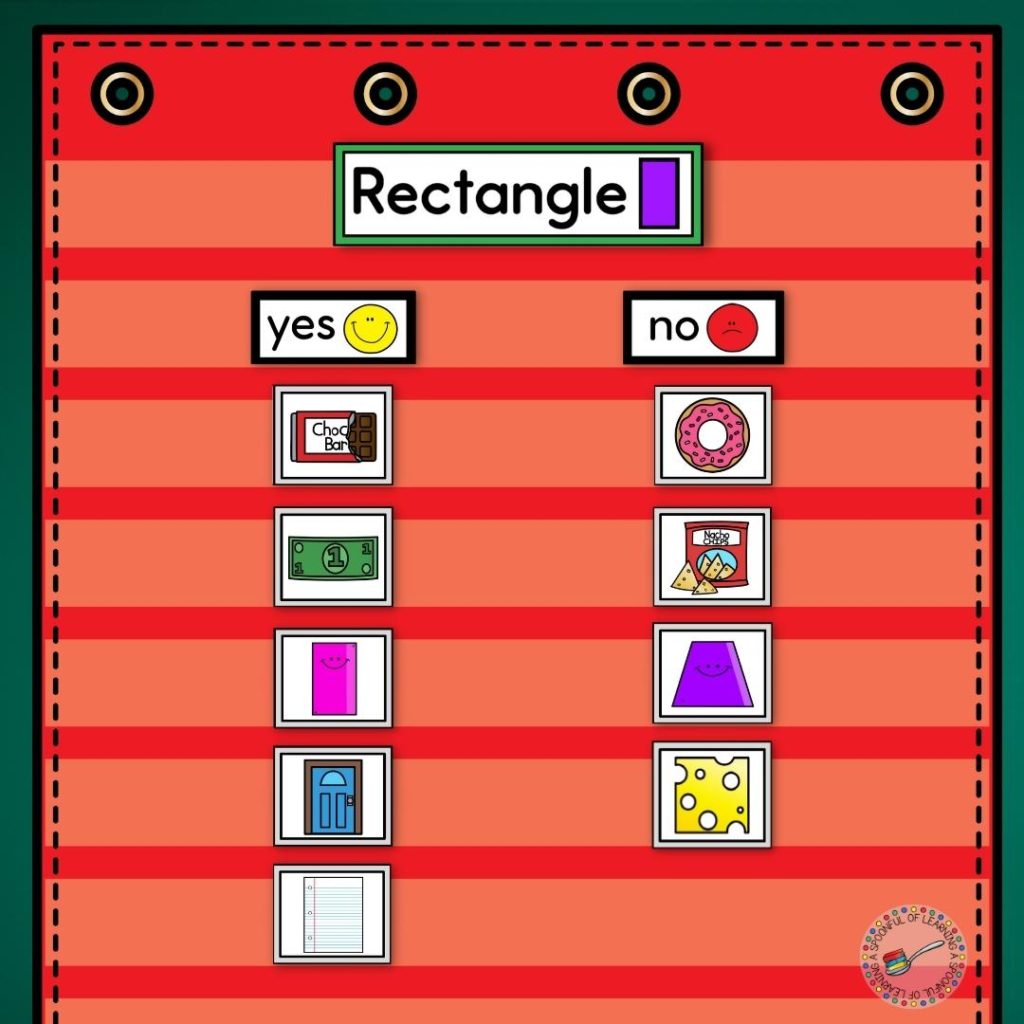
One of my favorite ways to introduce individual shapes is to use a picture sort. Students look at one picture at a time and then decide if that picture is the focus shape. As students complete a picture sort, they begin to see the pattern and will begin to more easily recognize the focus shape.
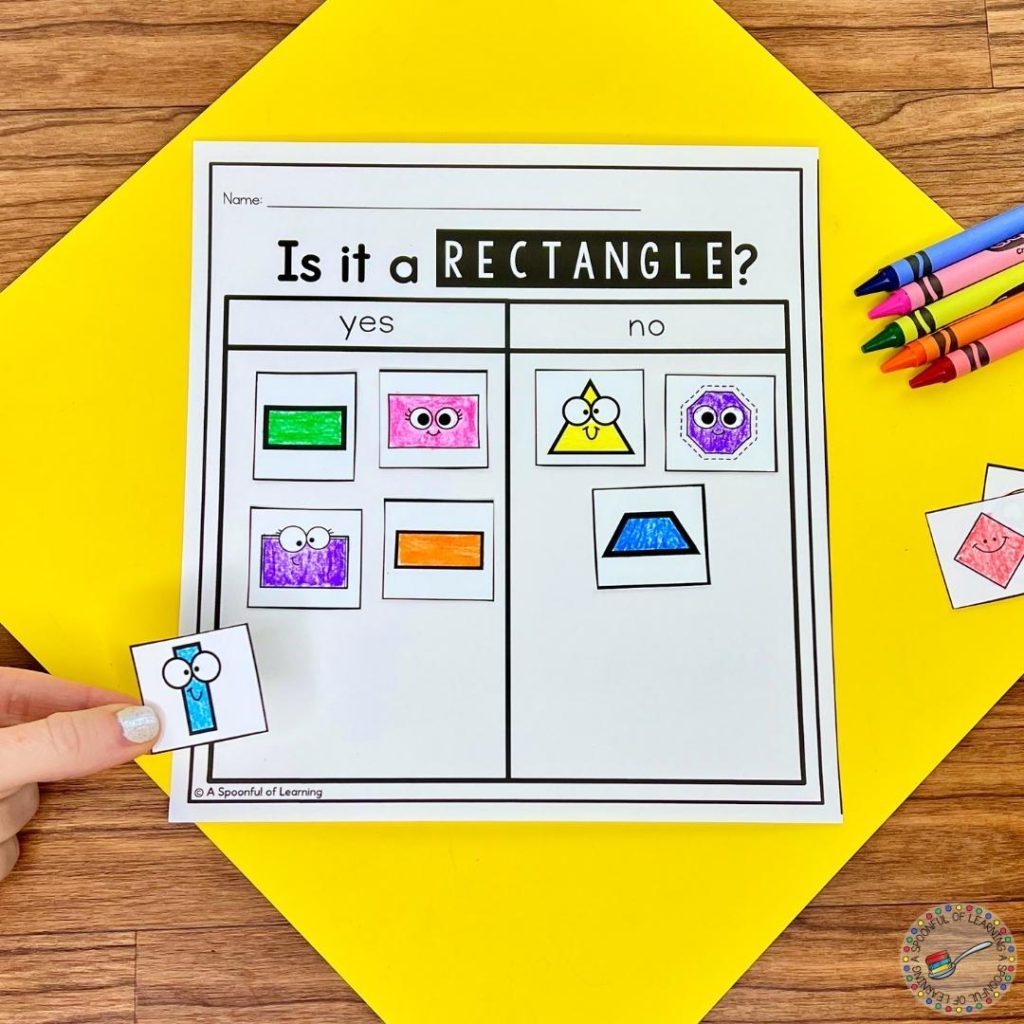
Shape sorts can be done as a whole class activity using a pocket chart. You can also incorporate shape sorts into math centers or small group practice time using a cut-and-paste shape sort worksheet.
In addition to recognizing shapes, students should be able to identify them by name. However, shape names can be a mouthful for young students whose communication skills are still developing! This is why it’s helpful to provide plenty of opportunities for students to practice saying shape names out loud.
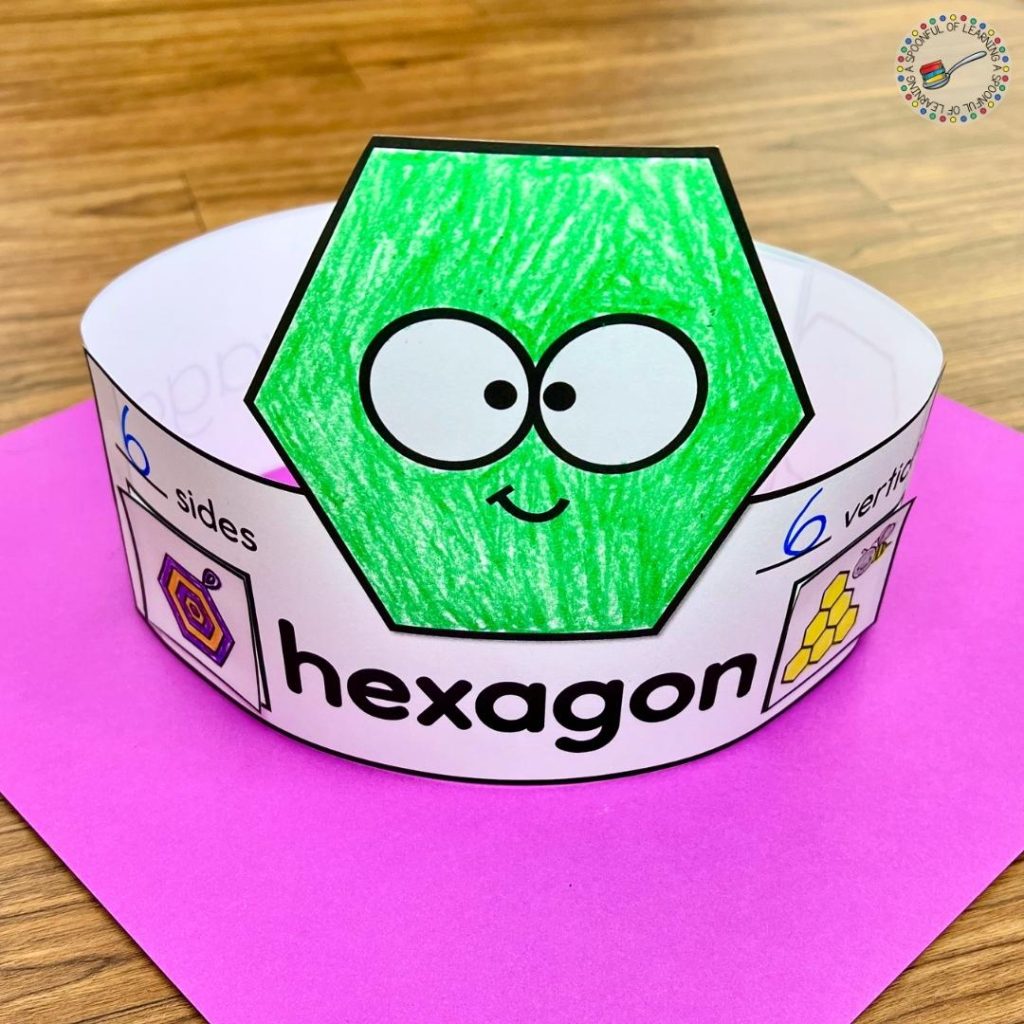
One of my favorite ways to get students talking about shapes is to have them create and wear a shape hat. When students walk around the school wearing their hats, they will most likely be asked about what they’re wearing. This gives them a chance to identify the shape on the hat!
In addition to being able to recognize a shape and identify it by name, students should have an understanding of what makes the shape unique. By teaching students about shape attributes, you are giving them a strong foundation that will help them with future math concepts.
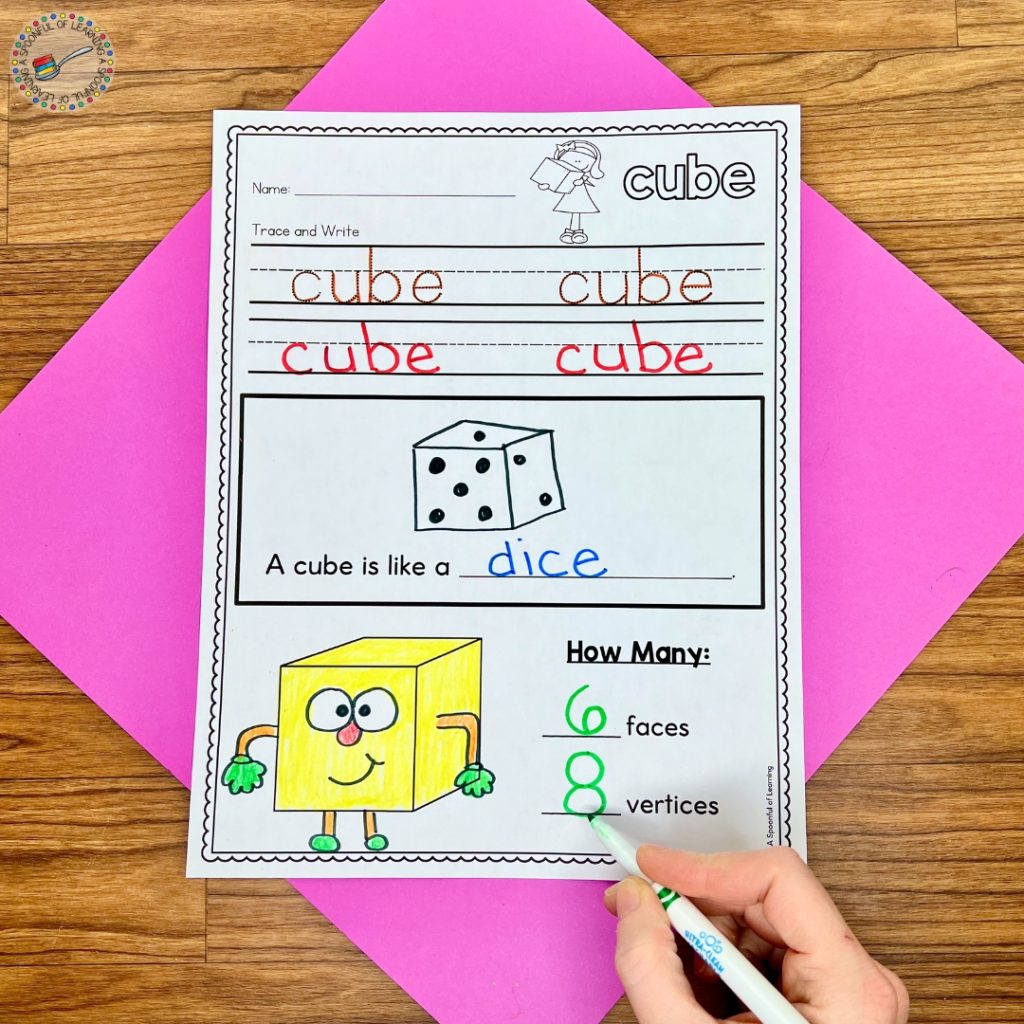
There are many fun activities that you can use to help students practice shape attributes, like these worksheets that include attributes along with other information about the shape. These lift-the-flap activities are also a hit with students!
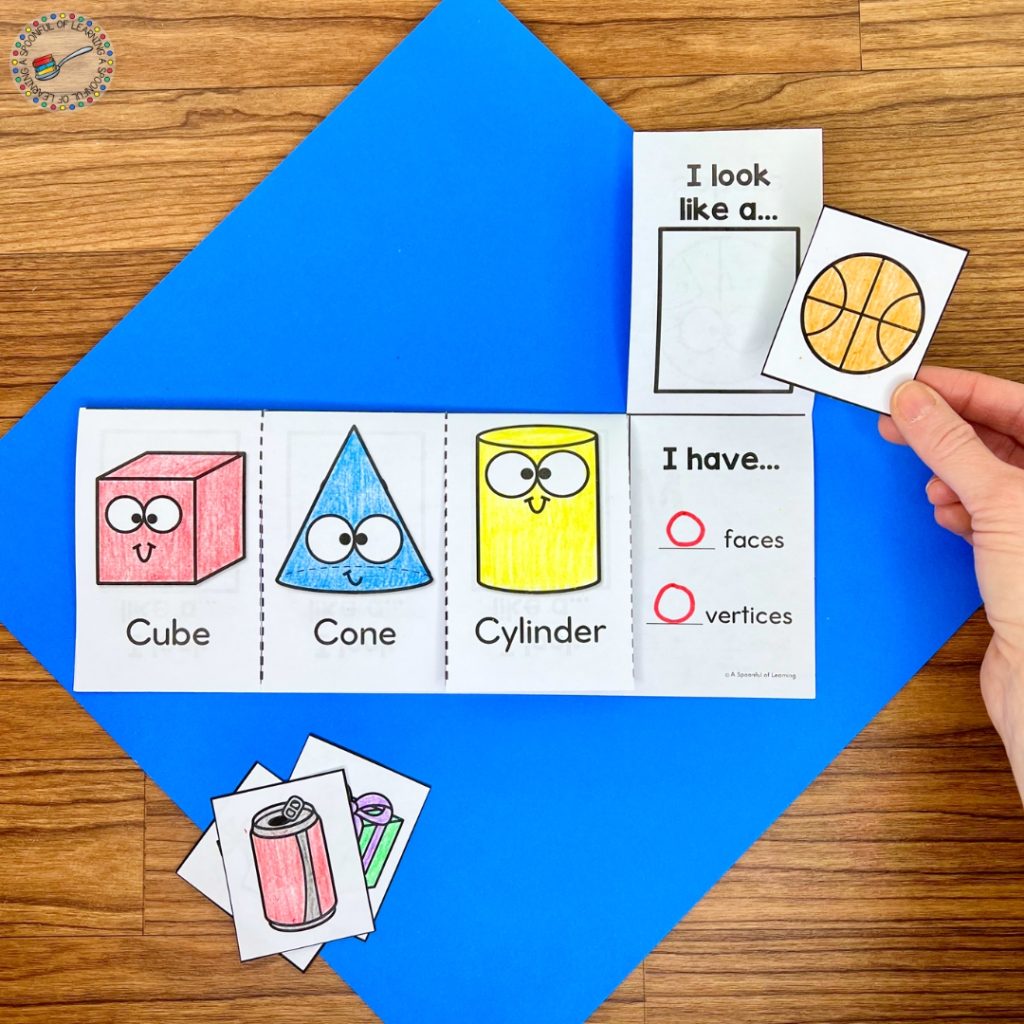
As with any new skill in kindergarten, the more hands-on practice students can get with shapes, the easier it will be for them to learn shape names and attributes. One activity that’s always a hit with young students is to go fishing for shapes. Just add paper clips to shape cards and have students fish for the cards using a magnet on a string.
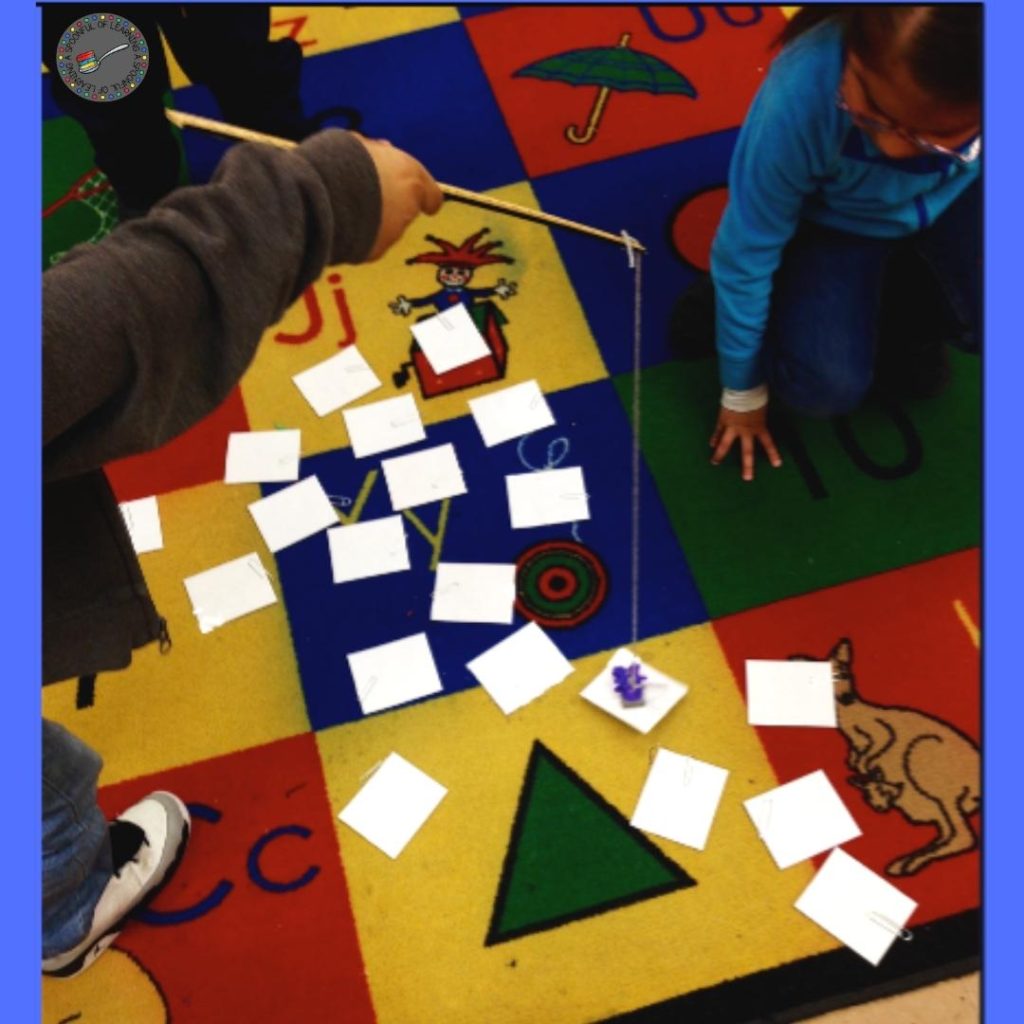

As students choose each shape card, they can name the shape and then add it to a shape sort. You can easily modify this activity to include different shapes based on which ones you’d like your students to practice. Once all of the cards have been chosen and sorted, students can mix them up and start again! They’ll want to play this game over and over, which is perfect for adding repetition to shape practice!
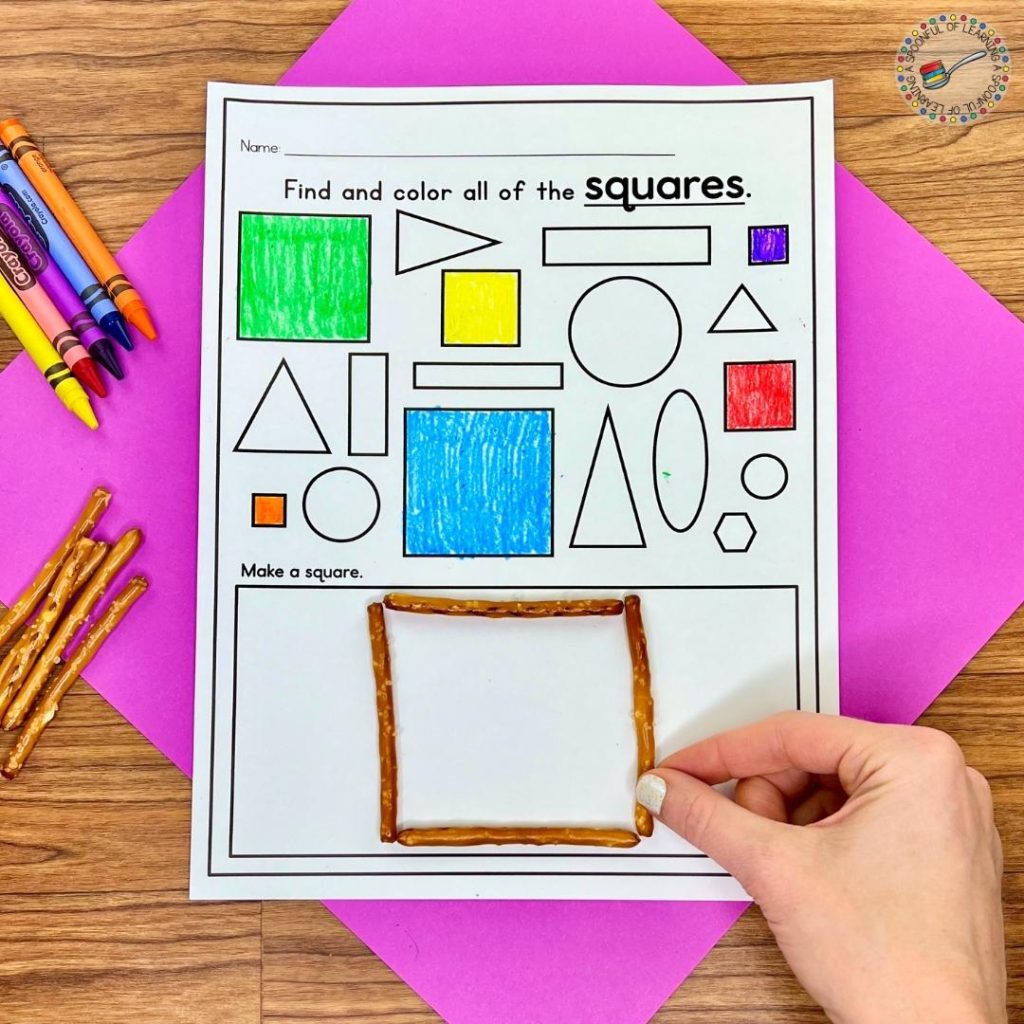
Shape building activities are another hands-on way to practice shapes. You could incorporate shape practice into snack time by having students build shapes with pretzel sticks or small pieces of cereal.
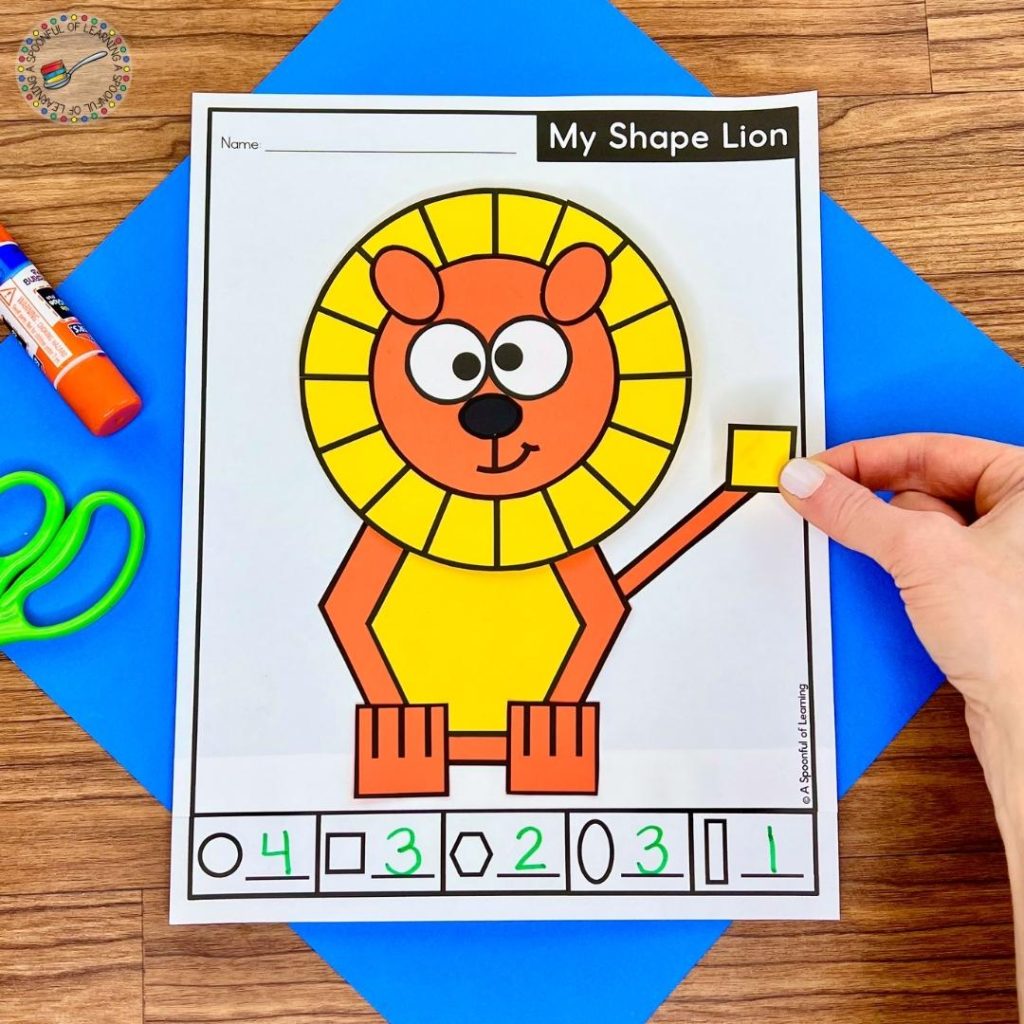
Your students will also have fun building pictures with shapes, then counting how many of each shape they used.
Another helpful way to help students practice shape recognition is to identify shapes in the world around them. This is especially helpful when it’s time to learn about 3D shapes! It can be hard for them to visualize the three-dimensional nature of these shapes without making connections to real-world objects.
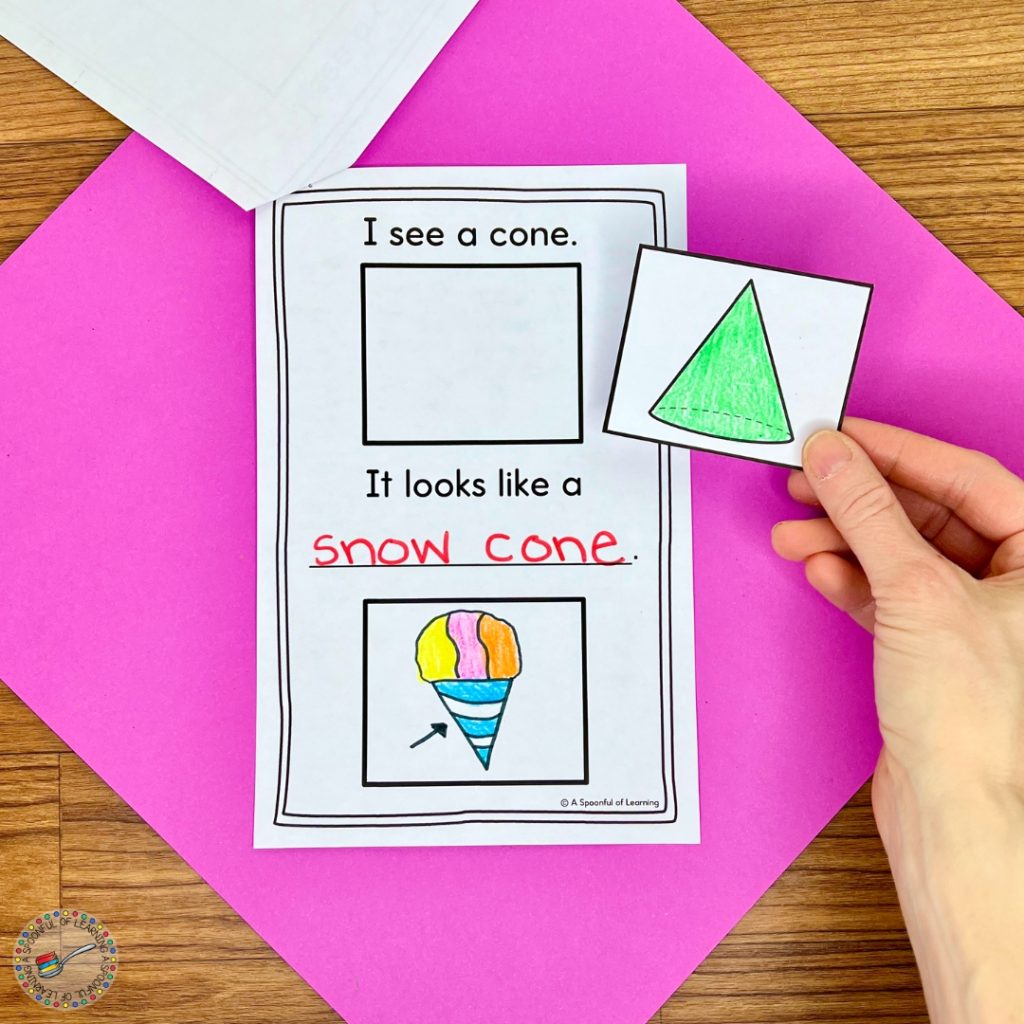
For example, this mini-reader gives students the chance to identify real-world objects that represent each shape. They are able to choose an object that is meaningful to them, write it on the line, and then draw a picture. When students are able to make these connections, they are more likely to remember the concepts they’re practicing.
The final tip for teaching shapes in kindergarten is to encourage students to talk about shapes at home. One of my favorite tools to encourage this are these adorable mini-books. Students can review everything they have learned as they complete the pages of these shape books. Once they’re finished, students are always eager to take their creations home to share with their families.

When parents see that their children have been practicing a particular shape in class, they will be more inclined to point out those shapes as they go about their activities. Any repetition and practice that students can have with shapes at home is a win!
If you do show and tell in your classroom, you could do shape themes to match the focus shape of each week. Students can bring an item from home that represents the shape they have been learning. This gives students a chance to practice recognizing real-world shapes at home.
Are you looking for more shape activities to use in your classroom? Check out this resource! I have created a shape activity bundle that will help your students practice shapes all year long as they go from identifying circles to hexagons to cylinders. You’ll be able to use these hands-on and engaging 2D and 3D shape activities to help students identify shapes as well as understand their attributes.
If you would like to take a closer look at everything included in this bundle, you can find it in the A Spoonful of Learning Shop and on TPT.


Are you short on time and want to come back to these tips and resources later? Be sure save this post! Just add the pin below to your favorite teaching board on Pinterest. You’ll be able to quickly find these activities and tips for teaching shapes in kindergarten.
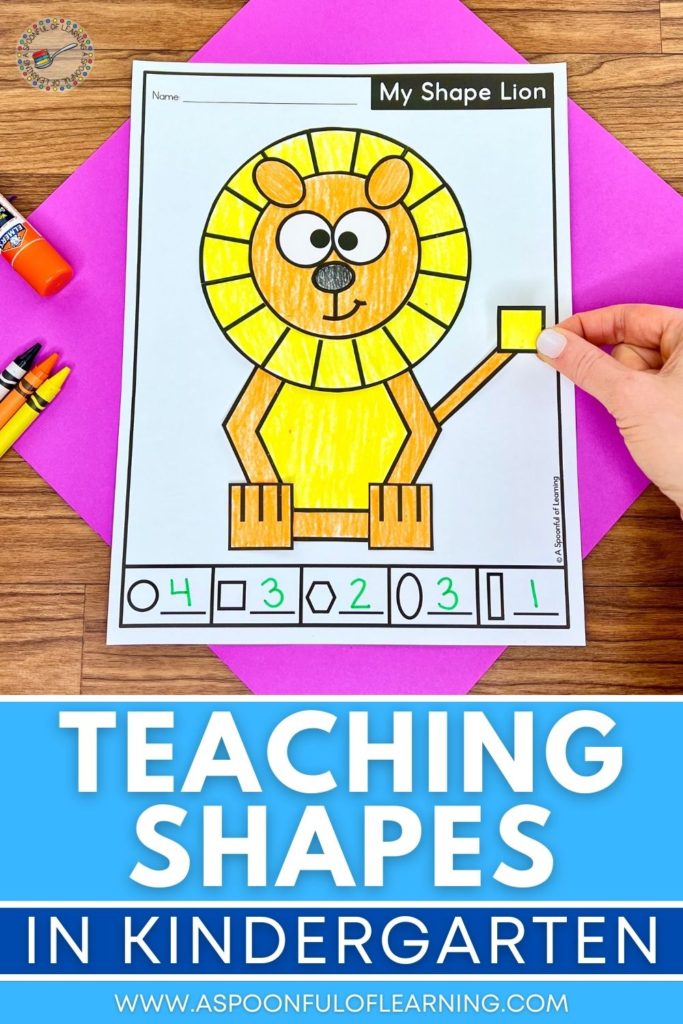
These alphabet books will have students dive deep into learning about each letter of the alphabet while eager to see what activity they get to complete next!